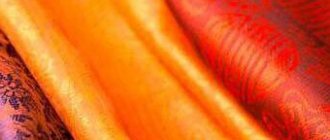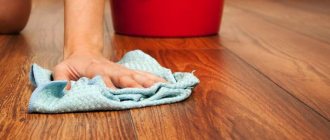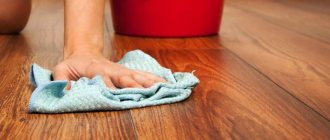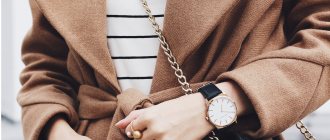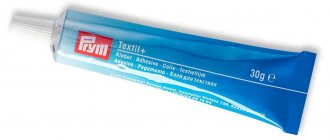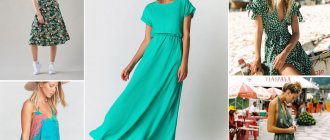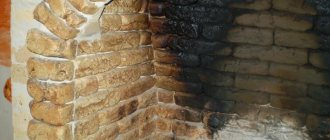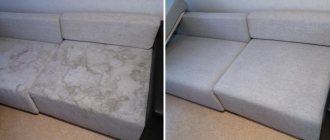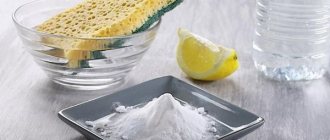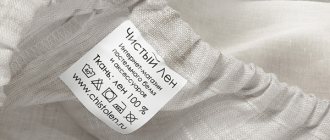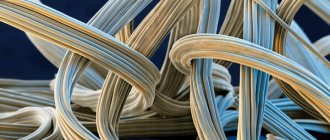The choice of fabrics in the textile world is so wide that it is easy to get confused in the names and properties. Natural, artificial, synthetic. The Internet is full of their descriptions.
Fabrics made from artificial fibers are especially popular. For example, viscose.
When fabrics are not labeled as “natural,” consumers may be prejudiced against them, viewing them as synthetic. Viscose is one of the most misunderstood fibers, man-made or natural. This is not a natural fiber at all. It also has nothing to do with synthetics. Although, sometimes viscose is called natural synthetics.
Particular attention is paid to the use of chemicals in the production of viscose. Today, companies producing viscose and other man-made materials are striving to achieve cleaner production, with processes that do not impact the environment. With various unique characteristics, viscose is an ideal fiber that can be used in a variety of applications. Thanks to this versatility, viscose materials are used in the fashion industry, in medicine, and in everyday life.
Before understanding in detail the topic: “Viscose - what kind of fabric?”, Let’s give a description of viscose fiber.
Viscose fiber is a man-made fiber created by processing cellulose.
What is viscose fabric made from? To create viscose, turn it into threads, and then from these threads to produce a fabric that can withstand regular wear and washing, it is necessary to resort to technological processes that use treatment with chemicals (caustic soda, NH3, acetone and H 2 SO 4). The output is fabric made from natural raw materials, created using chemicals.
Since the initial product is cellulose, a natural substance, this fiber is more stable than synthetics (for example, polyester). Increasingly, lyocell technology is used for the production of viscose, with the solvent N-methylmorpholine N-oxide. This is a more environmentally friendly method as it produces little waste.
A bit of amazing history
Viscose means “viscous” in Latin. This name is associated with the special properties of the raw material for obtaining a thick, viscous mass from processed wood pulp.
Viscose was invented in 1884 by an engineer from France, Ile de Chardonnay, who was working on the possibility of producing an artificial fiber with the necessary properties. His discovery is based on a method for creating textiles from wood processing products. An amazing feature of the new fabric was discovered to change properties depending on the processing technology and become like silk, linen, cotton or wool.
However, English chemists received a patent for the right to manufacture in 1893. The viscose production enterprise started operating within a year, where the technology was successfully implemented. Viscose gained global popularity almost 100 years later with the massive launch of textile factories producing fabrics.
What and how are viscose fibers made from?
We have already said that the basis for the production of viscose is a natural material, cellulose. At the first stage, it is subjected to mercerization - treatment with a solution of NaOH in water. After several rather complex operations, a “blank” of bright orange viscose is obtained.
Next, this mass is “pressed” through dies - metal caps covered with small holes. The result is fibers that are twisted into threads. The fibers can be either long or staple (short).
This is followed by finishing and drying.
Let's take a closer look.
Technological process
Most of the steps in the viscose production process involve preparing wood pulp for the production of viscose fibers. Special terms are used in the description. We tried to simplify it as much as possible.
- Preparation of cellulose from wood raw materials. Wood contains only 50% cellulose. Therefore, it is necessary to isolate cellulose from wood by placing the latter in a solution of calcium hydrosulfite. And then they begin to cook it in closed containers under pressure. Then water is added and applied to the conveyor belt. The dried cellulose is then cut into sheets, which can be used both to make paper and to make rayon.
- Mercerization (treatment with NaOH solution) of cellulose and obtaining a suspension. This is a long process that can take up to 2 hours.
- Squeezing the resulting mass using a special press
- Grinding of pressed material
- Oxidation of alkali cellulose with atmospheric oxygen
- Treatment with carbon disulfide to obtain a substance that can dissolve in sodium hydroxide solution
- Production of viscose by treating cellulose with chemical compounds.
Technology is constantly improving. There are several methods for producing viscose, which produce fibers with different characteristics that can be used in various fields of activity.
INTERESTING
- Viscose fiber was first produced in 1892.
- By squeezing the viscose mass through a device with a narrow slit, a film called cellophane was obtained.
- Rayon, created from viscose fibers, was patented in 1902.
The difference between viscose and cotton and synthetics
Some believe that viscose is a synthetic fiber, others attribute it to cotton. None of the statements are true.
Artificial raw materials, like viscose, are produced by processing natural wood material. This natural cellulose is a natural fiber, but the threads themselves for future fabrics are obtained artificially.
Whereas natural materials are made from fibers that are already available; during the work of silkworm caterpillars, the growth of cotton, or flax and animal wool.
Synthetics are a product created by man using developed technologies. In short, threads are produced by synthetic processing of petroleum products.
The difference between the three types of fabrics lies in the raw materials and processing methods.
Viscose or polyester: which is better?
Viscose
Polyester
Sometimes viscose is compared to polyester, but these fabrics are completely different. The main difference is the composition of the fibers. Viscose is created on the basis of cellulose threads, and polyester is created on the basis of polyester.
Viscose is made from natural raw materials and is equal to natural fabrics. Unlike polyester, it is breathable and hygroscopic.
Polyester is more durable, does not wrinkle easily, dries quickly and does not require special care, but from its appearance it is immediately clear that the fabric is artificial. Despite the many advantages of polyester clothing, experts do not recommend wearing them all the time.
Production
The production of the canvas is preceded by a series of chemical processes to break down wood cellulose. The technology of modern viscose production is based on initial developments with significant modernization.
The process is divided into basic stages:
- Crushing wood material into small chips and boiling them in an alkaline solution to obtain a raw material base, which is a gray cellulose mass.
- Bleaching and pressing.
- Creation of threads by pressing the mass through the tiny holes of a spinneret into a container of acid.
- Processing and finishing of fibers.
- Drying.
How to care for viscose
You need to wash, dry, and iron viscose clothes carefully and gently. And she will serve her term without losing her appearance.
Wash
It is better to do this manually or in a washing machine using the “gentle wash” mode. Water temperature – no more than 30 degrees. It is advisable to use mild detergents for delicate fabrics.
Spin
When washing by hand, the product should not be twisted, rubbed, or squeezed hard. When washing in a machine, you need to use a spin cycle at low speeds or exclude this process from washing altogether.
It is recommended to dry items in a dryer, spread out, away from heating appliances and away from direct sunlight.
Ironing
Iron on the minimum setting or setting the “silk” setting. Do not spray with water or steam using the steam function of the iron. But you can treat clothes with a steam generator by hanging them on hangers.
Advantages and disadvantages
The characteristics of viscose consist of positive and negative aspects.
Positive traits:
- Comfortable and pleasant to wear.
- Paints well and retains color brightness for a long time.
- Permeates air and absorbs moisture.
- Has the property of thermoregulation.
- Does not cause allergies, skin irritations and does not accumulate static electricity.
- Drapes beautifully and is easy to sew.
- Eco-friendly, harmless to nature when disposed of.
Negative properties:
- Greater susceptibility to creasing during use.
- The fabric is not durable, it soon wears out and loses its original appearance under the influence of high temperatures and ultraviolet radiation.
- Difficulties in caring for viscose products due to deformation and shrinkage during washing.
Description
What kind of fabric is viscose? The classic version is soft to the touch, thin, silky, shiny material. However, what the fabric ultimately looks like is determined, again, by the production technology - it can be similar to wool, silk, or linen. This is why the use of viscose is so widespread.
Probably, a simple description of viscose fabric was not enough for you, let's look at a photo of the material itself and products made from it.
The price depends on the composition of the canvas. Pure viscose, without the addition of synthetics, costs from 500 rubles per linear meter.
Mixed species
To reduce the impact of negative properties on the performance characteristics of the material, manufacturers introduce other fibers into the composition.
For example, polyester or nylon threads are added to viscose in different percentages. This provides greater strength, better wear resistance and less creasing of products. Such fabrics are called polyviscose.
Viscose fibers are also mixed with natural threads such as cotton, silk and wool. In some cases to reduce cost, in others to add softness and distinctive properties.
Structure and properties
Viscose fiber is a structural modification of cellulose. The properties of viscose fibers depend on the structure of the outer shell, which determines the increased strength of the fibers.
Viscose fibers are perfectly dyed, have excellent hygienic qualities, are highly durable, are quite cheap, and combine well with artificial fibers in the fabric.
Scope of application of viscose
Let's consider the areas of application of viscose. Viscose is a natural and artificial fabric, which makes it widely used in the creation of fabrics for clothing, home textiles, curtains, bed and underwear, as fillers for blankets, and for technical products.
Viscose is added to natural fabrics to obtain additional properties. Elastane is often used to improve performance. Cellophane, which is a viscose film, is used as packaging.
Types of viscose fabrics
Processing technology determines the properties of the fiber, which is produced in three types:
- staple for clothes
- cord thread for obtaining high-quality fabric
- viscose silk for home textiles
The use of different raw materials and production methods allows you to obtain several types of fabric:
Staple
The fabric is made from short fibers of equal length. Due to its short length it gains elasticity. It wears well and wrinkles less. Available in printed, smooth and variegated patterns. The staple comes in different structures, crepe, twill, with or without stretch.
Modal
The fabric is made entirely of cellulose. It has the qualities of cotton fabric, and in a number of parameters it surpasses it, for example, in hygroscopicity. Durable material is not subject to wear. Modal is used for sewing everyday items and high-quality bed linen.
Tencel
Made from eucalyptus cellulose. Tencel is silky and soft on contact with the skin. It has strength and high moisture and breathability. Prone to deformation if care rules are not followed. Used for bedding and home textiles.
Acetate
The basis of artificial fabric is cellulose waste, and not full-fledged raw materials. The fabric is light, with a slight silky sheen. It differs from other viscose materials in that it wrinkles less and does not stretch. It has a significant drawback - it does not absorb moisture well. The material is subject to melting at high temperatures, fabric fibers quickly dissolve even when exposed to a drop of acetone. Due to its specific properties, acetate has a lining and auxiliary purpose.
Cupra
The material resembles silk in quality and appearance, and is therefore considered valuable. The process of making fabric is complex and expensive. Cupra is too picky to care for. Although it has high levels of strength, thermoregulation and air conductivity, which are important during operation. Used for elegant toilets.
Siblon
It began to be produced relatively recently, in the late 70s of the twentieth century. Coniferous trees are used as raw materials. Siblon has significantly improved performance characteristics compared to other viscose fabrics.
Lining
Hemmed on the wrong side of outerwear, jackets and hats. Protects the base material, absorbs moisture, breathes. The viscose lining glides well like twill.
Quilted
The fabric is subjected to additional processing, folded in two layers and finished with stitching. Designed for body shirts, jackets, leggings, quilts and home textiles.
Knitwear
Viscose fiber is used for the production of non-woven materials, for example, kulirka, jersey, pique, interlock, although their composition can also be cotton. Used as monofilament or in combination with additives. The fabric has stretch properties and is used for sewing T-shirts, children's clothes, sweaters, and underwear. The knitwear is very pleasant and fits the figure beautifully.
Advantages and disadvantages
There are many varieties of viscose fabric. And its characteristics are, first of all, determined by its composition. If we focus on the fact that it is 100% viscose, obtained entirely from wood cellulose without the addition of other natural or synthetic additives, its main properties are as follows:
- Softness and pleasant tactile sensations when in contact with the skin.
- The ability to drape beautifully.
- Regulates heat exchange: it’s comfortable in hot weather, and you won’t freeze in cold weather.
- Not electrified.
- Viscose fabric is lightweight - it weighs half as much as cotton.
- Absorbs moisture well.
- Durable.
- Does not fade and colors well.
- Does not irritate the skin.
- Easily decomposes after use - no conditions are required for its disposal.
There are also disadvantages:
- Consumers are often interested in whether this material wrinkles or not. Yes, viscose wrinkles a lot. And this is one of the disadvantages of 100% viscose fabric. But at the same time it is easy to iron.
- Requires special care. If washed incorrectly, clothing made from it can become deformed: shrink or stretch - fabric when wet can change its properties if it is not handled properly.
- Burns out in the sun. When ultraviolet radiation hits fabric, it destroys its structure, causing clothes to wear out faster.
Many of these disadvantages can be eliminated if other fibers are added to the fabric during the manufacturing process.
Determining viscose in fabric composition
It is not difficult to recognize whether viscose is present in a fabric. You should start by studying the appearance. The material has bright colors and a matte or glossy surface. The canvas is strong, upon contact it is smooth and slightly cool.
An experiment using a burning match will help you verify your conclusions. As you know, the fabric contains treated wood. Therefore, when set on fire, viscose will burn with a characteristic thick flame, where the smell of scorched paper can be clearly heard. The charred fiber quickly curls into lumps. When touched they crumble. Cotton fabrics are also tested for naturalness in a similar way.
Customer Reviews
The lightness of summer products made from viscose fabric and their ability to allow air to pass through, like linen and cotton clothing, are noted.
The downside is that it creases, although not more than with natural fabrics.
Regarding use in the interior (bedspreads, curtains), the great similarity with silk and attractive appearance are emphasized.
In general, buyers agree that viscose fiber is a worthy alternative to more expensive natural fabrics.
Applications - what to sew
Viscose has many useful properties, which significantly expands its scope of application.
- Clothing for various purposes, including for children (blouses, dresses, jackets, skirts, blouses, suits).
- Men's shirts and T-shirts.
- Pajamas and nightgowns.
- Sportswear and underwear.
- Production of textile products and bed linen (tablecloths, bedspreads, curtains).
- Release of cleaning equipment.
- In the shoe industry.
- For decorative elements and finishing, such as embroidery.
What else are consumers interested in?
- Does viscose stretch or not?
100% viscose has very little stretch. The elasticity of matter is 2-3%. To increase this parameter, elastane is added to the fiber. However, if viscose clothes are dried vertically, they may stretch.
- Do pellets form on the surface of the material?
With proper care, even after numerous washes, the fabric does not pill.
- What composition does viscose shrink with?
100% viscose fabric does not shrink or stretch when washed if things are handled with care when wet. But viscose with additives can behave differently.
For example, if the fabric contains threads of cotton or wool, the material, taking into account their natural properties, may shrink when washed. In addition to shrinkage, cotton makes the fabric wrinkle. Polyester causes pilling to appear on clothes.
To avoid these troubles, you need to familiarize yourself with the designations on the clothing label and the composition of the fabric.
- How to determine whether there are viscose fibers in the fabric?
The easiest way is to pull a thread from the fabric and set it on fire. Viscose thread flares up with a strong and bright flame and burns quickly. In this case, a characteristic smell of burnt wood or paper appears. Synthetic fabric takes a long time to melt.
- What to do if your favorite dress becomes two sizes smaller after washing?
Pro tip: if a viscose item shrinks, you need to wash it again on a delicate cycle in the machine or by hand.
Recommendations for care
When washing things made of viscose, you must follow the recommendations, since the material is difficult to care for, like all things made from natural fabrics. All washing, drying and ironing operations must be carried out with care.
- Hand washing is preferable for viscose. Machine wash only on delicate cycle and preferably in a laundry bag. Spin needs to be turned off. Detergents should be soft and it is better to use liquid ones.
- Wrinkling or rubbing the fabric is not recommended. Replace wringing by gently squeezing out excess water and then letting it drain naturally.
- Drying flat on a towel or dryer will help prevent deformation and stretching.
- It is recommended to iron with a low-heat iron in the “silk” position and without steaming. Iron items should be slightly damp or through a damp iron. Spraying water and steam causes stains on fabric.
When caring, you should take into account the composition and manufacturer's recommendations on the product label.
Use and care
Viscose is quite whimsical, so it needs careful and thorough care. If you don’t want to be left with a faded, stretched rag instead of a beautiful thing, then you should follow all the rules of washing and ironing.
It should be remembered that viscose does not tolerate machine washing, spinning and ironing with a very hot iron with a steam function. Steam and splashes cause stains.
Therefore, hand washing is recommended. If, however, washing is carried out in a machine, then the mode should only be delicate, with the addition of appropriate detergents.
It is advisable to first check the information on the label, because such material usually consists of a combination of different types of fibers, and this may change the care conditions. It is better to iron in the “silk” mode through a damp cloth.
Comparison with other fabrics
Other fabrics, usually artificial, have properties similar to viscose. This is not to say that viscose is better than cotton. It is light and durable, but if it gets wet, it breaks. Cotton is completely natural, durable and breathable.
Compared to wool, viscose is less warm. It also allows air to pass through well and allows the skin to breathe. Wool also shrinks when washed.
Polyester is a purely synthetic fabric. It does not allow air to pass through, it is hot in summer and cold in winter. However, when wet, the fabric does not lose strength. It's easier to care for.
If you choose a carpet made of viscose or polypropylene, then you need to consider where it will be located. Viscose carpets do not tolerate moisture and should not be placed in the bathroom or kitchen. Polypropylene carpet is easier to use.
See more about the difference from cotton:
Compound
Fabrics can be 100% viscose, or contain natural and synthetic fibers. 100% viscose is a fragile, fragile, natural fabric. Cotton is added to increase strength. Does viscose stretch or not? To increase elasticity, the fiber is combined with elastane. In combination with polyester, it acquires the ability to drape well, which is used when sewing curtains and lining material for outerwear.
Appearance and texture
Soft, easily stretchable, but at the same time very dense and light fabric, chill fabric got its name because it keeps you cool even on the hottest day. It is also called micro-oil for the amazingly sensual effect of “oil” hugging the body.
With a slight shine, pleasant to the body, this fabric has only minor drawbacks - it is electrified, can rub, and reacts to the slightest impact with snags.
However, chill fabric is an affordable substitute for silk, an economical option for an elegant material that can be worn once and forgotten. Any design solutions are available for this fabric, even the most intricate ones. Synthetic knit looks great in a minimalist cut, and its stretch means you don't have to struggle with darts and fits. It will fit perfectly.
Prices
The cost of fabric depends on its composition, density, manufacturer, and variety. Viscose production is developing in the world. During Soviet times, Russia produced viscose in many factories. Then this direction stopped developing. Almost all the viscose on our shelves is imported. The main supplier of raw materials for the production of viscose is China. He is also the largest fabric manufacturer. This industry is actively developing in Uzbekistan.
However, fabrics from domestic manufacturers are also appearing on the market. They mainly produce viscose lining fabrics. The price of 1 meter of such lining twill is 250 rubles. viscose lining from Italy is more expensive. Its price is about 700–900 rubles. per meter
A meter of fine viscose knitwear can be bought for 700–900 rubles. Dense material will cost more. Printed viscose made in China will cost 500–700 rubles. per meter with a width of 1.45 m. Crepe viscose from the same manufacturer is in the same range.
In the segment of more noble viscose fabrics, prices start from several thousand and end in tens of thousands per linear meter. The width of viscose is usually in the range of 1.40–1.50 m.
Reviews
Reviews say that the popularity of the fabric is well deserved.
I love viscose for its lightness. I have several summer sundresses made from this fabric. Of course, they wrinkle a little, but I am ready to forgive them for this shortcoming. Moreover, a linen dress wrinkles much more, while viscose is at least easy to iron.
Olga, Saratov, 25 years old.
I decided to update the interior of the bedroom. One of the tasks was choosing new textiles for the window. I decided to take plain curtains made of thick viscose. They were sewn carefully, the fabric looks expensive and noble, like silk. I like.
Tatyana, Tula, 44 years old
I don’t like to buy ready-made clothes; I prefer to sew to order. I went to choose a lining for the jacket. In the store, the seller advised me to take viscose, it was called twill. I'm very pleased with this lining. Can't compare to polyester. Of course, it costs more, but it’s nice to wear!
Alevtina, Tver, 33 years old
How I wanted a quilted dress! And here I have it. The label says that the composition is 100% viscose. I thought it would float like any synthetic, but it turns out not. The fabric looks more like cotton. Now this is my favorite dress. Already survived several washes. I do not observe any changes in the quality of the fabric.
Victoria, Omsk, 29 years old
Each type of viscose has its own processing
Viscose differs not only in the raw materials used, but also in the processing methods. The first method, created in 1855 by Chardonnay and launched in 1891, has not stood the test of time. The final product was dangerous for everyday use, as it was highly flammable. Production required large expenses, so production was discontinued at the beginning of the 20th century.
But the popularity of viscose was gaining momentum, which forced scientists to continue experiments. Many of their results were successful. Today, several processing methods are used in production, which determines the type of fabric. Among them:
- A modern method based on xanthate (a compound of salts and esters of acids of the same name) and carbon disulfide. The production of viscose using this technology was proposed by Charles Cross in 1894. Large manufactories did not immediately adopt it. But, once they tried it, they didn’t want to give it up due to cheaper production and getting a high-quality product at the end.
- Cellulose + acetic acid residues (acetic anhydride). Method for creating acetate.
- N-oxide N-methylmorpholine. Dissolving cellulose in a complex substance produces lyocell. This technology is widespread in Chinese enterprises.
- Tetra amino acid dihydroxide. The dissolution of cellulose raw materials in this composition is used in the manufacture of cupro fabric. This species was first obtained in 1899.
- Spinning of reconstituted cellulose. In this way, a modal and its varieties are created. They are durable due to the combination with spandex and cotton.
Treatment with chemical compounds does not affect the environmental friendliness of the finished textile, which remains safe and hypoallergenic.
Fabric products
Clothing is made from synthetic knitwear, mainly for women, which is worn in the warm season or in a heated place. Things made from cold weather are not worn in layers, nor are they worn with tights or an additional blouse - this increases the electrification, the knitwear crumples and creeps unsightly up to the waist.
Product options:
- dresses, tunics, sundresses, blouses;
- Men's shirts;
- underwear;
- evening, cocktail dresses;
- stage and dance costumes.
Synthetic knits and especially chills are very popular in the Middle East, where the climate is hot and women traditionally wear covered clothing. This type of fabric allows them to completely cover their head and body while still feeling comfortable.
